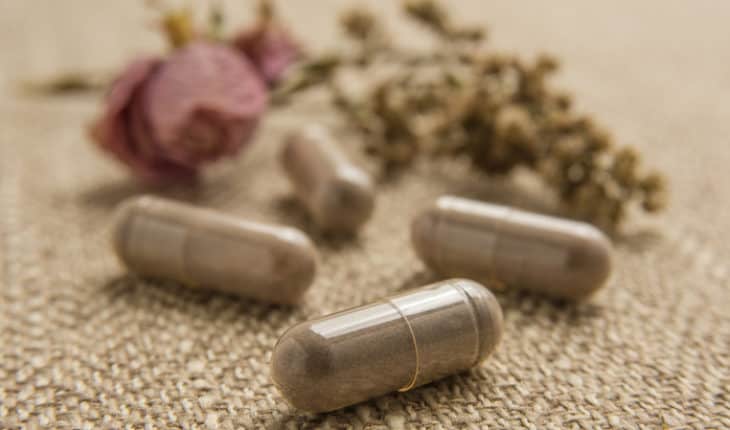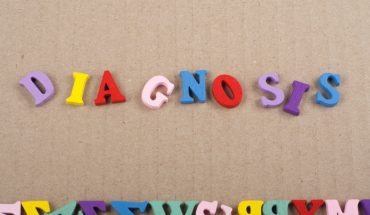Placentophagy: does it work beyond a ‘placebo’ effect? Sallyann Beresford has been a doula, or professional birthing partner, for the last 20 years. Over that time, Sallyann, 51 who is based in the West Midlands, has assisted hundreds of women during their deliveries in NHS hospitals, private hospitals and homes, and has run courses and classes for thousands more.
So she’s not surprised that Millie Mackintosh, 32, the former Made in Chelsea star, has just announced she is planning to eat her own placenta, which is the organ that passes oxygen, nutrients and hormones from the mother’s blood supply, via to the babies blood supply, through the umbilical cord, to the baby. Waste products from the baby’s body, such as carbon dioxide, are transported back out to the placenta and out through the mother’s body.
The confectionary heiress, who already has a one year old daughter Sienna, announced last week that she intended to have her placenta made into vitamin pills, following in the footsteps of Colleen Rooney and Kim Kardashian. ‘I’m really excited to see if they work for me’ she told fans after receiving the chiller box to store the placenta in.
Over the last five years, the demand has shot up so now most of my clients are choosing to eat their placentas after the birth of their child,’ says Sallyann, who has four children of her own aged from 15 to 23. ‘The benefits of placentophagy are so huge and unquestionable that its becoming mainstream.’ Placentophagy, which started as a fringe practice among supporters of the natural birth movement in the 1970s, involves eating the after birth either raw in a smoothie or, cooked or dehydrated in capsule form. Benefits are said to include boosting milk production and energy levels as well as helping to reduce post-partum bleeding.
How prevalent is it is difficult to estimate but a 2018 US study of medical records for births outside of hospitals containing 23,242 birth events in the United States, 30.8 per cent of mothers consumed their placenta – that’s nearly one third. Midwives in NHS hospital birthing rooms are now used to dealing with clients who bring chiller boxes for their placentas and want to take them neatly packaged home. After a baby is born, the placenta is expelled from the uterus as a waste product and a midwife will check that it is complete. During a Caesarean section, the doctor lifts out will remove the placenta manually. Sallyann, who accompanies women into hospital or stays with them at home while they give birth, says this is now routine and she would be ‘shocked’ if an NHS team refused to allow this without good reason, such as infection.
But is there any actual evidence that placentophagy works beyond a ‘placebo’ effect? Sallyann certainly believes so. When one of her clients started bleeding heavily after a straightforward birth at home, Beresford was in no doubt what she should do. ‘I put a small piece of her placenta in her cheek and the bleeding started easing off almost immediately. She didn’t need to go to hospital and could relax with her baby in familiar surroundings.’
How this works is still unknown but the placenta is a complex organ that is rich in hormones including progesterone, and oestrogen, oxytocin (known as the ‘love’ hormone) and human placental lactogen which may aid milk production, as well as vitamins B6 and E and stem cells, which could be helping to contract blood vessels. Various B vitamins are also found in the placenta and are known to help balance hormones and improve mood disorders. Cytokines and growth factors help the body to heal wounds and repair tissue. Lactogen may aid milk production and endorphins and the ‘love’ hormone, oxytocin could be responsible for the improvement in mood disorders.
However, the doses of these hormones and nutrients – and the extent to which they are degraded by cooking or dehydrating the placenta – are not known.
Research on animals reported in 2012 that mammals which eat their placentas may increase mother and infant bonding as well as enhancing a new mother’s pain threshold and maternal behaviour. Michel Odent, a pioneer in natural childbirth, agrees that this could help to persuade the sceptics. ‘The discovery by Kristal of a placental substance that makes endorphins more effective (‘Placental Opioid-Enhancing Factor’) could be seen as a justification for placentophagy in our species,’ he says. In his experience, some women eat their placentas inspired by the theory that it might prevent post natal depression. However, the claim that it can reduce the postpartum blues are also not substantiated, although anecdotally women do report that they feel better when they take placenta remedies.
According to a 2017 study published in the journal Women and Birth, women who took their own placenta pills did show small changes in hormone concentrations, although it is not known whether this was enough to cause any effect. Research in Nevada found consuming capsules made from the organ in the weeks following birth did almost nothing to improve maternal fatigue or ward off depression.
For those who choose to do this, there are multiple websites to tell you how and even how to make your placenta into a range of meals and snacks. Or you can call in the professionals. Carly Lewis is a placenta remedies specialist who prepares placenta products for individual clients and is fully approved by Waverley Borough Council to work in her own placenta kitchen. She is also the Chair of the Placenta Remedies Network which currently represents 59 practitioners around the UK and abroad. ‘ I have seen for myself the effect that placenta remedies can have on women in the immediate period after birth. The difference was huge and it was wonderful.
Since December 2020, the placenta has been legally classified as a ‘food’ due to its extensive history of personal consumption, according to the Food Standards Agency. That means that ‘Service providers making remedies for new parents using their placenta are classified as a ‘Food Business Operator’ (FBO) and need to be registered as such with their local authority. Rigorously tested safety procedures need to be documented in a robust Food Safety Management System for registration and inspection.’ Carly, who has a five star rating for hygiene, personally collects the placentas from clients. The placenta , which must be kept below 8 degrees centigrade prior to processing. However, she cannot process placentas of women who have smoked during pregnancy – this is due to heavy metals including cadmium being stored in the placenta which may be toxic to ingest. Placentas of women who have been diagnosed with infections including sepsis or chorioamnioitis must also be discarded and disposed of. Women should also not expel the placenta into a birthing pool if they are choosing to encapsulate. ‘I have no problem with your body fluids being in that water but I don’t know if your husband or birth partner has been in that water with you, and what other contaminants that could be in the water which may affect the process,’ says Carly. ‘We ask that you stand and birth the placenta into a bowl or you leave the pool and birth on dry land.’
Although raw placenta smoothies are considered the most potent remedies, placenta encapsulation specialists will dehydratessicate your placenta through a process of steaming and dehydrating , and return it you as neatly packed capsules which are taken up to three times a day. Placenta encapsulation preparations cost around £2050 and sanitise the whole process. According to a review of internet forums published in the journal BMC Pregnancy and Childbirth in 2020, most women had positive attitudes towards their own experiences of placentophagy, and by far the most common method of consumption of the placenta was encapsulation.
As with any supplemental food product, Women should always be aware of the risks. Carly advises clients who suffer symptoms side effects including tummy ache, diarrhoea or headache to stop taking placenta remedies and see if symptoms settled down. Many of these side effects are normal reactions to the birth process, change of hormones or reaction to drugs taken during birth so the placenta pills can be gradually reintroduced over time.
The Centers for Disease Control and Prevention in the US issued a warning to avoid the intake of placenta capsules was issued following a case in which a newborn infant developed neonatal group B streptococcus sepsis in 2016 after the mother ingested contaminated placenta capsules (Farr et al, 2017). However, this does appear to be exceptional. Another study published in the BMC Pregnancy and Childbirth journal in 2020 found that risks were not proven either to the new born or the mother. ‘Hypothetical risks have also been proposed (toxicological, endocrinological and immunological) with little evidence supporting them and a large medical records study showed no association with adverse neonatal outcomes.’
Concern has also been expressed at the risk of spreading diseases such as HIV, hepatitis and other blood-borne illnesses (Hayes, 2016). However, there has been no reported cases of this. There has also been no case of Covid being passed via placentophagy.
At the end of the day, everyone agrees that most women can decide to try placentophagy, with the right advice from health practitioners. According to Mike Bowen, consultant obstetrician and gynaecologist who works in NHS and private hospitals, placentophagy is not generally recommended. ‘There are too many, what ifs and placentas may harbour infection or toxins. In my experience, most midwives discourage the practice although of course, women are free to choose as long as they have looked into the risks and the placenta does not need to be retained for medical tests. There is no proven benefit of eating your own placenta after the birth of your child and there may be some real harms.’
- Biden Declines Second Term: Health Concerns - 23rd July 2024
- New catheter coating stops bacteria cells from swarming - 10th June 2024
- AI-designed catheters could dramatically reduce urinary tract infections - 10th June 2024






